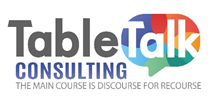
In board rooms to school rooms, the overuse of the word ‘inclusion’ is evident. We thought a table metaphor would help in understanding how to live it out fully. These days, it is common to see radical inclusion listed among companies’ core values. I submit that inclusion is a radical concept without adding ‘radical’ in front of it. Organizations and companies, whether non-profit or for profit are prioritizing inclusion initiatives and investing resources. But for some, inclusion is an assumption that is easier said than done.
Inclusion at the table is where storytelling empowers both the listeners and the storyteller. Something as simple as seating arrangements allows full participation and gives equitable time for engagement. The power of storytelling is a gamechanger. You see, to avoid shame and judgement, create a climate of value visibility.
So, what is your story? We all have a unique story. Storytelling is where meaningful dialogue begins. It is a gift of affirmation achieved through active listening and empathy as pathways to building trust, resolving conflict, understanding, and valuing differences; and moving toward acceptance or agreement. Storytelling offers a powerful dose of reality. It is an opportunity to remove the façade or pretense. Sometimes, we hide behind the masks of avoidance, compromise, and accommodation and diminish our authenticity and ability to speak our truth.
Inviting all to the table to share their stories, to build relationships, and breakdown the barriers to understanding and collaboration is the key to creating inclusion. How can you begin to create inclusion? Well, create a welcoming climate by letting everyone know that their voice matters. Next, invite those who do not speak up to have a voice. Through welcome, engagement, and mutual respect that reduces isolation and promotes collaboration, results will become more organic.
Your voice matters, too. So, share your comments about creating greater inclusivity. Everyone’s participation helps to create inclusion and belonging. Come to the table where you are welcome, heard, and valued. Until next time, remember that the table is “where discourse is the main course for recourse.”
